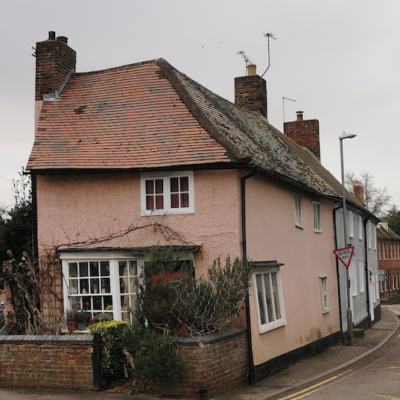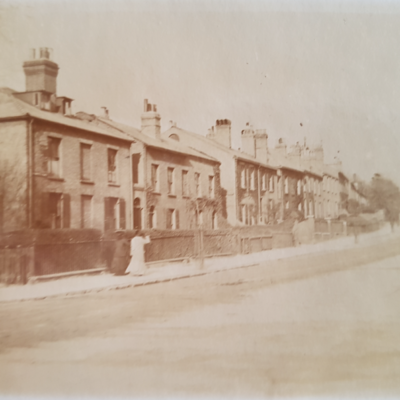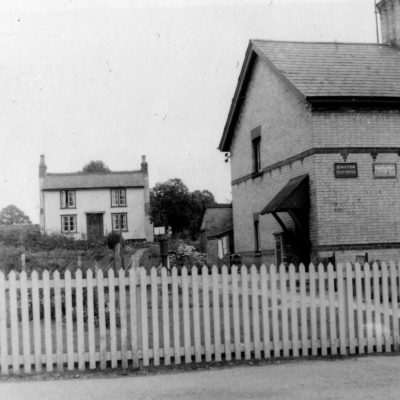Search by topic
- archaeology
- Building of Local Interest
- chapel
- charity
- church
- crime
- dressmaker
- fire
- Great Eastern Railway
- Listed building
- Mapping Relief
- medieval
- oral history
- poverty
- Public House
- Religious House
- Roman
- scholar
- school
- Then and Now
- tudor
- women
- work
- world war one
- world war two
Search by text
Hinxton Hall
History of Hinxton Hall
Country house. 1748-1756 for John Bromwell Jones; late C18 additions by William Vachell; early and mid C19 alterations and early C20 additions. … C18 open String staircase with four balusters to each tread. Fine late C18 or early C19 chimney pieces of French Rococo and Empire designs; plastered cornices and colonade to hall. Wall paintings in drawing room copied from antique paintings in Herculeneum and Pompeii recorded in c.1950 (R.C.H.M.) and now covered with exception of two panels. Mid C19 plastered ceilings and painted panels. Double doors with over mantels to south lobby entrance now sealed but possibly originally a house entry from a side carriage way.
Game larder, early to mid C19. Flint with red brick dressings.
Stables to south-west of Hinxton Hall GV II Stables converted to workshops. Early C19 with C20 alterations.
Anglo-Saxon period:
Excavation in the grounds from 1993-1995 revealed extensive remains from this period. There was evidence of four sunken-floored huts, two 12-metre long halls. By the late 9th cent. a farmstead existed. There was evidence of a game similar to backgammon and of an instrument similar to the bagpipes. Only one burial was discovered, that of a woman with a knife.
Medieval:
By the 11th cent there were two communities, one around Hinxton Hall area, the other around Lordship Farm. The two manors in ‘Haustitona’, 15.5 hides, were awarded to Picot the Sheriff of Cambridge. The larger was around Lordship Farm.
Hinxton Hall was bought by Captain Joseph Richardson of Horseheath in the1737. He built a small ‘box’ from which to pursue his fishing interests. His friends called the place Trout Hall. William Cole, the antiquarian, recalled many happy days there.
The property was sold to Thomas Brown of Ickleton, whose nephew Richard Holden, settled it on his daughter Mary. Her first husband demolished the existing house and built a much grander abode. By 1756 the first substantial house was built. However, keen to preserve the name Trout Hall, a figure of a large trout was carved in stone and placed over the chief door case fronting the garden. Mary surrendered her estate to her daughter Mary and her son-in-law William Vachell, who already lived in the Hall, in 1755.
In 1798 the property was sold together with 130 acres to Edward Chapman Green.
1804 on the death of Chapman Green the estate was auctioned off again. The sale particulars describe a very fine villa with a coach house for 5 carriages, stabling for 14 horses and other buildings. The purchaser was Jonathan Miles who leased the property back to the Green family.
1806 when Jonathan Miles left the area the estate was sold. It was sold a second time in 1806.
1807 estate sold again.
1812 estate purchased by Viscount Maynard for £6,000 and a special room for the Prince Regent was set up.
1831 the residents announced the completion of their fashioanble Pompeian parlour, decorated with frescos and murals.
1832 mansion with 50 acres sold.
1833 Charles Newberry occupied the Hall.
1834 Edward Humphrey Green who was to become High Sheriff of Cambridgeshire buys the estate. After the Inclosure of 1833 the large landowners benefitted greatly and the grounds of Hinxton Hall were enlarged and the gardens laid out in contemporary style. An ice-house was built on the site of the later Village Hall.
1846 Edward Humphrey Greene [the ‘e’ was added deliberately] married the niece of the Duke of Cleveland, the widowed Mrs Julia Flower, née Forrester.
1850 Queen Victoria granted the Greenes the right to bear arms and title of the de Freville family. The Greene family were residents of the village and generous patrons.
1863 the Greenes hosted a dinner for the whole village.
1868 Mr Greene de Freville died and 18 tenants attended his funeral.
1881 census:
Anne Turner, 40, housekeeper, b Dullingham
Ella Barnes, 20, housemaid, b London
Arthur J Rowlinson, 15, page servant, b Shelford
John Bard, 65, gamekeeper, b Duxford
Ann Bard, 64, b Ickleton
William Limehouse, 46, head gardener, b Lincs
Susan, 45, b Lincs
Mary A, 19, lady’s maid, b Leics
Emily, 17, kitchen maid, b Northants
Andrew, 12, b Northants
Ernest, 10, b Northants
Evelyn, 6, b Northants
1882 Mrs Greene de Freville finally moves to London. The house was let to Wyndham Porter, a keen race goer. Then, in 1882 Greene de Freville’s second cousin, Major Edward Henry Greene inherited the estate and took the name de Freville.
In 1884 Major E H Greene de Freville of Hinxton Hall bought all of the Nash family land, which included Hinxton Grange, New Farm, Lordship Farm and other buildings.
1887 Jubilee Fete hosted
1888 Major Greene described as Lord of the Manor and principal landowner.
1891
Alan S W Stanley, 29, magistrate Captain 4th Suffolk Reg., b Cambridge
Lilian C, 29, b Australia
Alan W W, 3 mos, b London
Charles W, 31, magistrate Captain 4th Suffolk Reg. living on own means, b Cambridge
Helen M, 25, b New Zealand
Herbert D Fryer, 33, major 4th Batt. Suffolk Reg and living on own means, b Elm
Ann Davies, 27, nurse, b Wales
Isabella Ross, 32, cook, b Scotland
Mary A Clark, 32, housemaid, b Burwell
Louisa M Davies, 18, housemaid, b Dorset
Ellen Lilley, 16, kitchenmaid, b Ickleton
Walter Bunn, 15, house boy, b Little Abington
In 1899 P L Hudson bought the Lordship and other lands from the de Frevilles. The house was either leased or sold to Ernest Hankey.
In 1900 R B Wilkinson bought the estate.
1906 electric lighting installed.
1917 property left to Mrs Robinson, R B Wilkinson’s sister, in his will, on condition that she lived at the house. The Wilkinson family continued living there for 40 years.
1939 Hinxton Hall
Ethel M S Robinson, b 1887, householder, state registered nurse
Laura P Robinson, b 1889, householder, state registered nurse
Donald A G Ladell, b 1905, parlourmaid,
Agnes Birkitt, b 1891, cook,
Mary Askew, 17, b 1917, head housemaid
Park Cottage: Arthur Theobald, b 1904, rat and rabbit catcher, head Air Raid Warden
Park Cottage: William R Dorrian, b 1909, gardener, St John’s Ambulance Brigade
During WWII various military groups were billeted in tents and Nissen huts in the ground. The Air Ministry permitted the Misses Robinson to continue living there in a flat. Considerable damage took place to the building.
1950s Colonel Raphael bight the Hall and 55 acreas. He kept racehorses there.
Adeanes of Babraham bought the property.
1953 Tube Investments bought the property for £25,000.
1997 a large area of agricultural land was bought by The Welcome Trust, owners of the Genome Campus.
Contribute
Do you have any information about the people or places in this article? If so, then please let us know using the Contact page or by emailing capturingcambridge@
License
This work is licensed under CC BY-NC-SA 4.0








